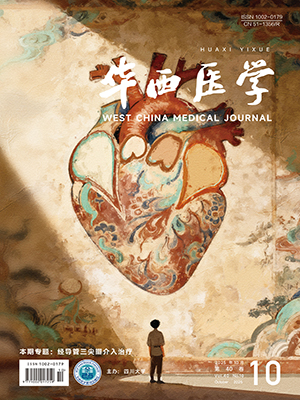Citation: HAO Youhua, XIE Hongyan, RAN Maojun, LI Wenyuan, SHI Cong, PENG Weijun, WANG Zhenling, TAN Li. Current status of medical waste management and classification disposal in hospitals of Hubei Province: a cross-sectional survey. West China Medical Journal, 2025, 40(3): 400-405. doi: 10.7507/1002-0179.202502090 Copy
Copyright © the editorial department of West China Medical Journal of West China Medical Publisher. All rights reserved
-
Previous Article
Application of targeted high-throughput sequencing technology in the investigation of pseudo-outbreak of Mycobacterium chelonae hospital infection caused by flexible bronchoscope -
Next Article
Investigation and analysis of difficulties in nosocomial infection management in medical institutions of Shanghai




